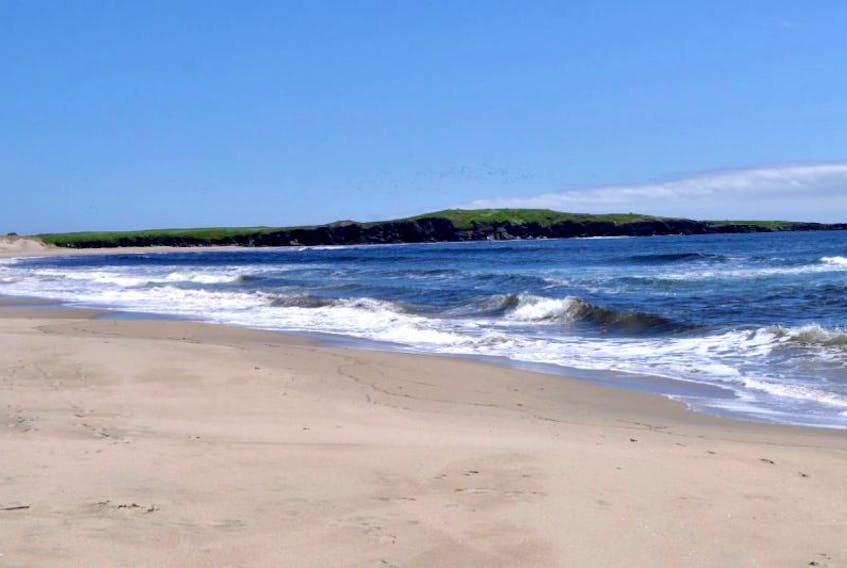
Piping plovers remain endangered and overall the news is still not good.
A census conducted last year found only 28 plovers in the province, with only 12 pairs. The species has been in decline since 2009 when 65 birds were counted.
“I didn’t realize the population had actually declined so much in this province,” admits Lorna LaFosse, a Park Ranger working at J. T. Cheeseman Provincial Park.
She is one of the few with a permit to monitor endangered species.
LaFosse keeps a protective eye on the five piping plovers currently staying on one of the park’s beaches and has been doing so since 1997 when she first started as a park interpreter.
“In that time there were six pairs. That was normal for that year,” said LaFosse. “Last year we got one pair. This year we have two pairs.”
A nesting piping plover may choose to abandon its eggs if disturbed. One of the biggest threats facing the piping plovers is mankind’s encroachment on their habitat.
“We don’t get a lot of problems here with ATVs,” said LaFosse, who can only recall one incident inside J. T. Cheeseman. The park ranger and other staff are also diligent about making sure visitors keep their dogs tethered on the beach, even going so far as to provide leashes if necessary.
LaFosse believes the new banding program launched by scientists with Environment and Climate Change Canada will help conservation efforts.
She highlighted two birds in particular.
Piping plover #44 was banded at Big Barachois in 2015. The banding allowed the bird to be tracked to a nest in the Codroy Valley Provincial Park (CVPP) last year and again this summer. Piping plover #58 was also banded at Big Barachois in 2015 and nested in CVPP last year, but this year is nesting at Cheeseman.
“The habitat changes too,” said LaFosse. “If the habitat is not suitable for them, physically suitable, they won’t nest there.”
Piping plovers are considered an indicator species, which means that a beach environment must be successful in order to attract them.
For the past two years piping plovers have been spotted nesting at the Millville beach in CVPP but prior to that they had been using the Searston beach, which they’ve since shunned.
“Beaches are like that,” explained LaFosse. “They’re very dynamic, affected by winds and storm surges and everything, so the sand moves around a lot.”
This year the piping plovers at Cheeseman nested in a good spot according to LaFosse. They’re hidden more by the grasses and not near a path. Typically the piping plovers show up on the beach in April but don’t nest until May after they’ve found a mate.
“The male will show off,” laughed LaFosse. “They do a flight in the sky where they’re calling.”
It will take about a week for a female plover to lay the usual four eggs, one every other day, and a month or so before they hatch. By 20 days the fledglings can usually fly a bit and a week after that they’re roughly the size of an adult, slightly larger than a sparrow but smaller than a robin.
Two pairs and an adult single male are currently in residence; one nest has hatched. Three nests have been seen at CVPP beaches this year too, as well as a single adult.
“If you have piping plover on a beach that tells you that things are right on that beach,” said LaFosse. “Once they disappear you know that something is not the way it should be.”
In order to ensure that piping plovers keep returning to this region as they have for decades, people must pay attention to posted signage and learn how to properly share the beaches with these tiny birds.









